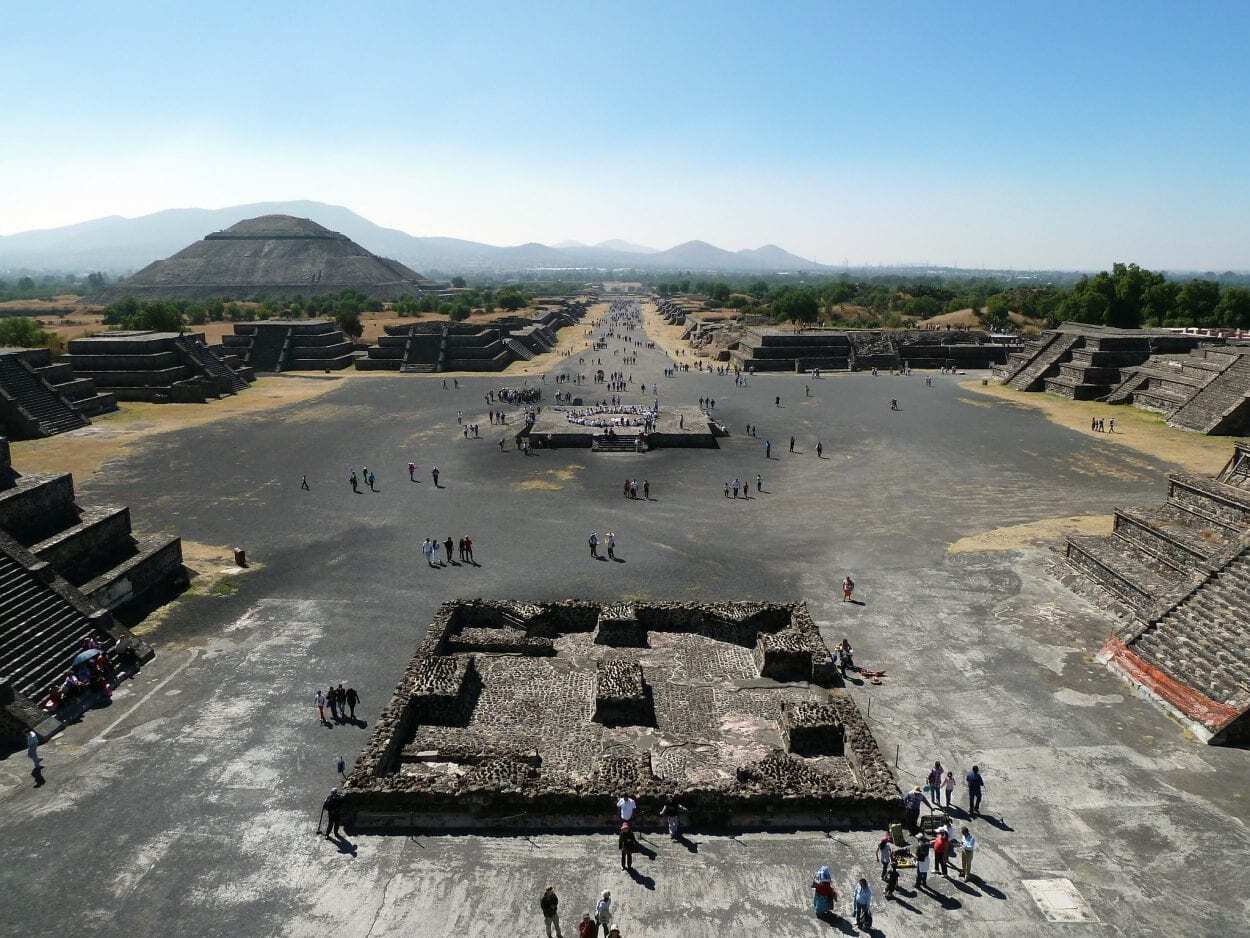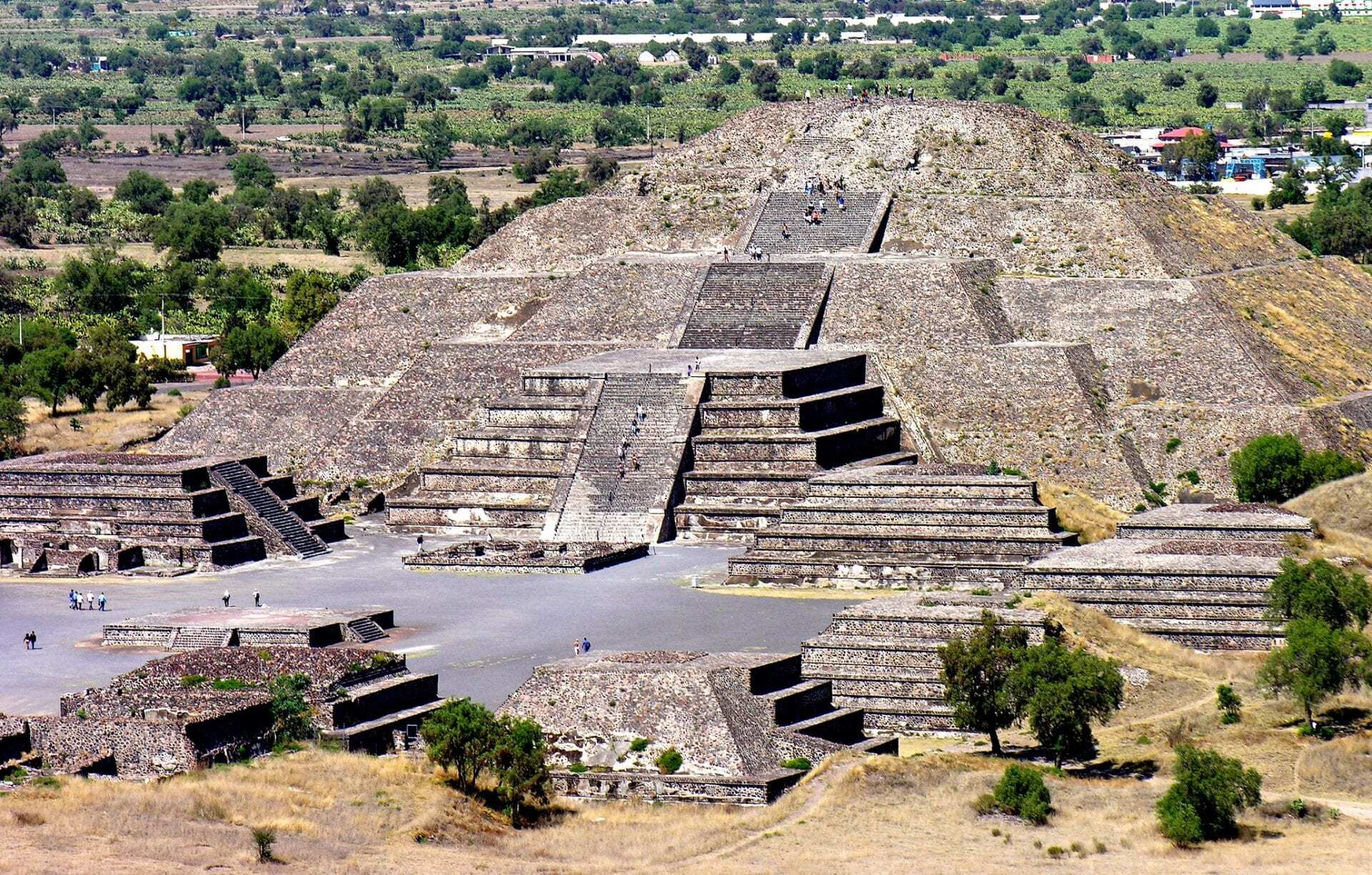Archaeologists from the National Institute of Anthropology and History in Mexico City has detected the existence of a natural cave beneath the Pyramid of the Moon at Teotihuacán in Mexico.
Teotihuacán is an ancient Mesoamerican city, built between the 1st and 7th centuries AD. The city developed into one of the largest urban centres in the pre-Columbian Americas, with a population of around 125,000–200,000 inhabitants and covered an area of 8895 acres.
The discovery was published in the latest edition of the Journal of Archaeological Science (Volume 118, June 2020) by Denisse Argote and colleagues whilst conducting a study to characterise the subsoil under the Pyramid of the Moon.
The Pyramid of the Moon is the second-largest pyramid at Teotihuacán at a height of 43 metres that mimics the contours of the mountain Cerro Gordo. The pyramid was built over seven consecutive pyramid layers between AD 100 to 450 and was used to perform ceremonies and ritual human and animal sacrifices.
Mesoamerican cities used plazas as the centre of social life; in the case of the Pyramid of the Moon, it is proposed that the public plaza was also used for astronomical observations, calendar-related activities and was a political and socio-economic centre.
With the placement of the pyramid at the end of the Avenue of the Dead and at the foot of Cerro Gordo, it is theorised that it was symbolic of a connection between the avenue and the watery underworld, whereas the mountain serves as an anchor to the earth.

Previous studies have revealed man-made tunnels beneath the Pyramid of the Moon, as well as tunnels and caves under the Pyramid of the Sun and the Pyramid of Quetzalcoatl, also called the Temple of the Feathered-Serpent. The tunnels were generally excavated for construction materials, that were later repurposed for astronomical observations and the veneration of death in the underworld.
The team applied ERT and ANT surveys, non-invasive geophysical techniques that identified a natural void under the Pyramid of the Moon and the indication of tunnels. By analysing the electrical resistance of the ground beneath the structure, they discovered a partially filled cavern at a depth of 15 metres.
The paper authors said: “The impact of this discovery opens the discussion about the original planning of Teotihuacan’s urban design.”
Unlike the man-made caves found at Teotihuacán, the researchers believe that the cave formed naturally, and was a focal point for the early settlers which influenced how the city was initially planned.
Header Image Credit : Dennis Jarvis





